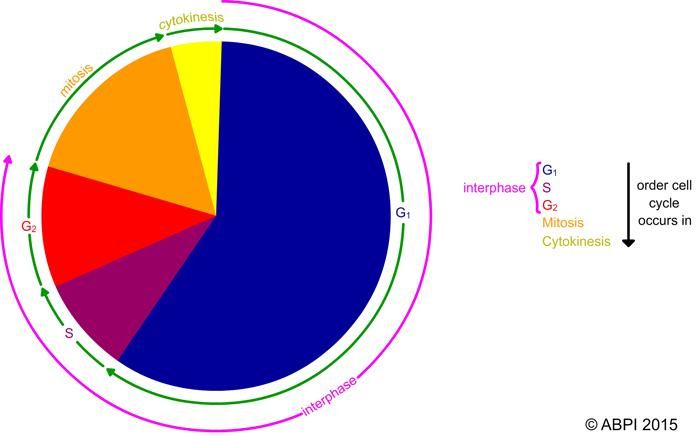This topic takes on average 45 minutes to read.
There are a number of interactive features in this resource:
 Biology
Biology
 Chemistry
Chemistry
 Human biology
Human biology
Mitotic cell division does not take place at random. The division of the nucleus takes place as part in a sequence of events known as the cell cycle. Mitosis and cytokinesis, the period of active cell division, is followed by a period of non-division known as interphase. During interphase the cells:
The length of the cell cycle is variable. It can be very rapid, taking 24 hours or less, or it can take years. The length of mitosis and cytokinesis remains relatively constant – it is the length of interphase that varies.

To maintain a healthy balance of cells in the body, it is important that before cells divide they are the right size with plenty of cytoplasm and replicated organelles, that the DNA has replicated and is error free (or any errors have been repaired) and that once mitosis gets under way, the pairs of chromatids are attached to the spindle in the correct positions by the centromere.
The cell cycle has a number of checkpoints that monitor progress and determine whether the process have been completed properly at each stage of the cycle. If all is well the cell continues in the cycle. If the cell doesn’t satisfy the requirements for a checkpoint, it enters a resting state until the requirements are met or the cell is destroyed. It does not continue in mitosis.
The control chemicals are small proteins called cyclins. These build up and attach to enzymes called cyclin-dependent kinases (CDKs). The cyclin/CDK complex phosphorylates other proteins, changing their shape and bringing about the next stage in the cell cycle. For example: